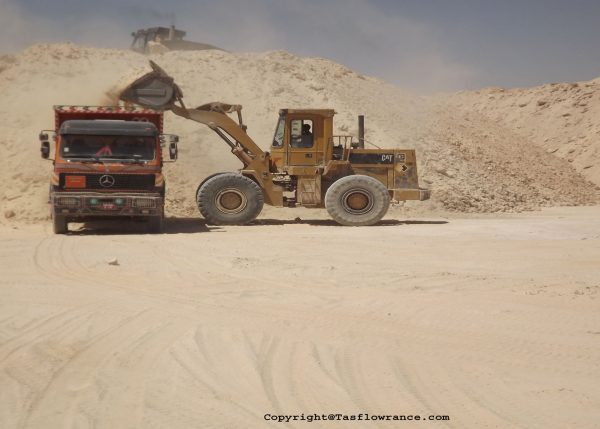Kaolin Al2O32SiO22H2O
Kaolin, also known as china clay, is a versatile soft white clay prized for its fine texture and bright color. It forms the foundation of china and porcelain, and its applications extend far beyond delicate ceramics. Kaolin is widely used in the manufacturing of paper, rubber, and paint, thanks to its properties as an absorbent, bulking agent, and modifier.
In its natural state kaolin is a white, soft powder consisting principally of the mineral kaolinite, which, under the electron microscope, is seen to consist of roughly hexagonal, platy crystals ranging in size from about 0.1 micro meter to 10 micro meters or even larger.
While typically microscopic, kaolinite crystals can exhibit fascinating variations in shape. Some resemble elongated tubes (vermicular) or stacked plates (book-like), and rarely, even reach millimeter size. Natural kaolin deposits are rarely pure, often containing a mix of other minerals like muscovite, quartz, feldspar, and anatase. These impurities can sometimes stain crude kaolin a yellowish color due to the presence of iron hydroxide pigments.
To achieve the desired purity for commercial applications, kaolin often undergoes a chemical bleaching process that removes iron pigments. Additionally, it may be washed to eliminate other unwanted minerals. This purification process refines the clay for its unique properties. Interestingly, kaolin exhibits plasticity when mixed with water at a 20-35% ratio. This means it can be molded under pressure and retain its shape afterwards. With higher water content, kaolin transforms into a slurry, becoming a fluid suspension.
| Element | Result range % |
| Na2O | 0.0454 |
| MgO | 0.0524 |
| Al2O3 | 30- 34 |
| SiO2 | 41.40 |
| P2O5 | 0.105 |
| SO3 | 0.0273 |
| K2O | 0.0291 |
| CaO | 0.1618 |
| TiO2 | 2.843 |
| Cr2O3 | 0.0232 |
| Fe2O3 | 1.180 |
| NiO | 0.0070 |
| CuO | 0.0051 |
| ZnO | 0.0103 |
| Ga2O2 | 0.0070 |
| SrO | 0.0073 |
| Y2O3 | 0.0145 |
| ZrO2 | 0.1548 |
| Nb2O5 | 0.0225 |
| PbO | 0.0028 |
| ThO2 | 0.0034 |
| LOI-CHO | 16.9069 |
| S-BLEND | 0.0500 |
| pH | 6.00 – 8.00 |
| Whiteness | 81.82 |
| Density | 1.502 |
| Liquefaction | 0.3 |
| Viscosity by Leman, sec (d=4.0 мм) | Not more than 35 |
| Thixotropy, °Г (degrees of Gallenkamp) | From 0 to 20 |
| Casting rate (after 30 min), мм | no less 5,5 |
| Loss on ignition, % | no less 13,0 |
China clay, another name for kaolin, boasts a surprising number of uses across various industries. Here’s a breakdown of some of its most significant applications:
Ceramics King: China clay reigns supreme in the world of ceramics. Its bright white color, high heat resistance, and smooth texture make it ideal for producing porcelain, sanitaryware, and fine china . Manufacturers often combine kaolin with feldspar and silica for optimal results.
Paper Powerhouse: Around 40% of kaolin goes towards filling and coating paper. This enhances the paper’s smoothness, brightness, and opacity, making it more aesthetically pleasing and functional.
Cosmetics Champion: Many cosmetic products benefit from kaolin’s oil-absorbing properties. It acts as a thickener, bulking agent, and helps control shine, making it a popular ingredient in facial masks and powders.
Medicine Marvel: Kaolin finds use in medicinal applications too. It can be used to treat diarrhea by absorbing excess fluids and toxins in the gut. Additionally, it can soothe irritation and inflammation in the mouth.
Beyond the Basics: China clay’s applications extend far beyond these. It’s used as a filler and additive in adhesives, sealants, and caulks. In white cement, it contributes to the desired color. Refractory bricks, which need to withstand high temperatures, also incorporate kaolin. Interestingly, china clay even finds uses as a fog suppressant in harbors and a dust control agent on roads.
These are just some of the many ways china clay serves various industries. Its unique properties continue to make it a valuable material with diverse applications.
Video Gallery
Please Submit your inquiries








